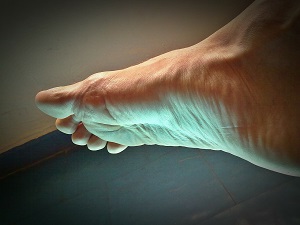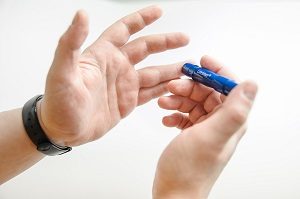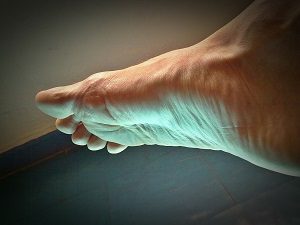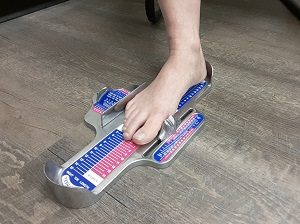
Diabetes and the Feet
Diabetic complications can lead to problems in the feet. These problems can become serious if not taken care of. Those with diabetes should be monitoring their feet to prevent these problems from worsening.
What is Diabetes?

Diabetes occurs when there is an issue with insulin, which regulates your blood sugar. Type 1 means there is a lack of insulin to regulate the blood sugar. This type is typically diagnosed earlier in life. Type 2 means there is an insulin resistance. The body produces insulin, but it cannot use the insulin properly. This type is typically diagnosed later in life.
Complications Related to Diabetes and the Feet
Peripheral artierial disease/peripheral vascular disease and peripheral neuropathy are complications that relate to diabetes and the feet. These complications can lead to more severe problems if not monitored.
Peripheral Arterial Disease and Peripheral Vascular Disease
Peripheral arterial disease (PAD) and peripheral vascular disease (PVD) are complications related to diabetes. They affect blood flow to the extremities meaning the toes and feet are receiving much less blood than someone without PAD or PVD. Blood circulation is important to aid in the healing process.
Peripheral Neuropathy
Peripheral neuropathy is another diabetic complication affecting the feet. This neuropathy means there is damage to the nerves, which does affect the feet. This damage reduces the sensation of pain, pressure, touch and temperature. The foot may experience increased pain, numbness or tingling. It may become hard for someone with peripheral neuropathy to feel a sensation that the brain would normally indicate as painful to the feet.
How these Diabetic Complications affect the Feet
In the diabetic feet, the complications listed above can lead to problems such as ulcers and additional pain.
Ulcers
Ulcers are skin wounds that do not heal properly. These ulcers are common in diabetics due to neuropathy and PAD/PVD. With less feeling in the feet, an injury may develop without knowing. The pain receptors do a poor job warning the brain of potential injury. Once the injury is present, PAD/PVD prevent the wound from healing properly, leading to the ulcer.
If these ulcers are not taken care of, they can lead to more severe complications such as an infection and amputation.
Pain
Painful feet may occur due to nerve damage from neuropathy. This pain may be worsened through external factors such as improper gait and footwear.
Treatment/Prevention for Diabetes and the Feet
At Home

To prevent ulcers from worsening in the diabetic feet, it is important to check the top and bottom of both feet regularly. Look for indications of pressure such as cuts, redness, calluses and corns. This is to ensure that these pressure indications are dealt with before they worsen. If you are unable to check the bottom of your feet, have someone check for you, or check with a mirror on the floor or a selfie stick with a camera.
Look inside of your shoes before putting them on. A rock or another foreign object may have fallen into the shoe without notice. Without proper feeling in the feet, it will be hard to notice if an object is rubbing against the feet.
Wearing shoes indoors is beneficial to prevent injury from stepping on a sharp object, and for support. This support becomes especially important when there are high pressure areas on the foot causing calluses and corns.
Orthotics
Orthotics help to prevent ulcers by reducing high pressure points. When these high-pressure areas begin to worsen, they may be visible through calluses, corns or skin discolouration. As a diabetic, a gait assessment is recommended to prevent pain and injury.
They also help to prevent excessive pressure and stretch to the nerves and lessen the pain from neuropathy. This does not cure the neuropathy, but can lessen the impact by reducing pain from external factors.
Proper Footwear

Without the proper footwear, ulcers can easily develop from pressure or shearing. A few things to look for are wide and deep fitting shoes that do not point at the toes. A good way to determine if the shoes fit properly is to take out the original insert, stand on the insert, and observe your feet. All the toes and the widest points of the foot should not be overhanging. If there is an overhang, the shoe is likely rubbing or compressing these areas, increasing the risk of an ulcer.
With increased rubbing and compression from improper footwear, this can also exaggerate any pain due to neuropathy.
Footcare
When calluses and corns develop due to high pressure areas, the orthotic helps to remove this pressure, but any calluses and corns will still remain. Removing these corns and calluses are important to reduce further pressure in the area.
If you have additional questions, feel free to contact us!

You must be logged in to post a comment.